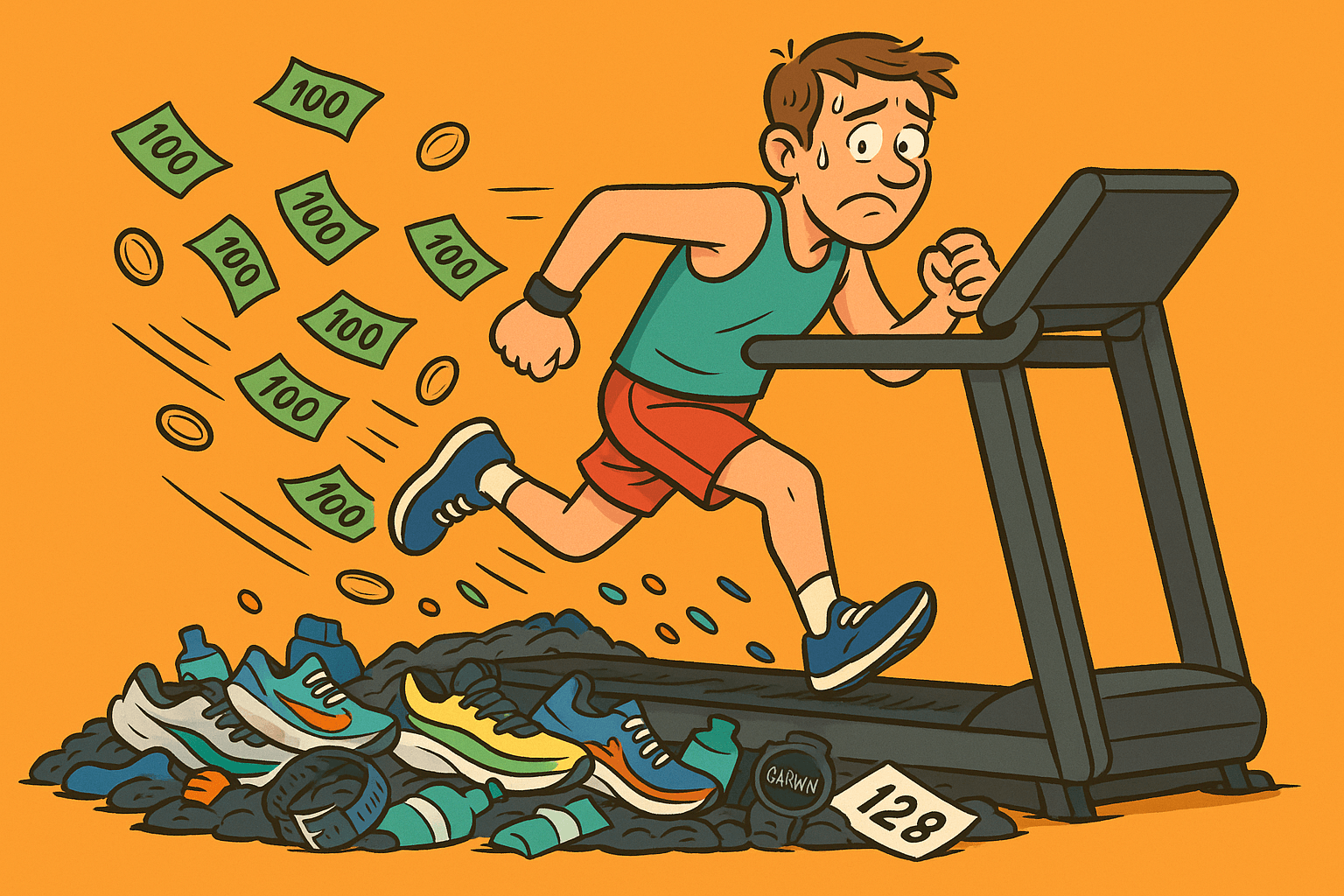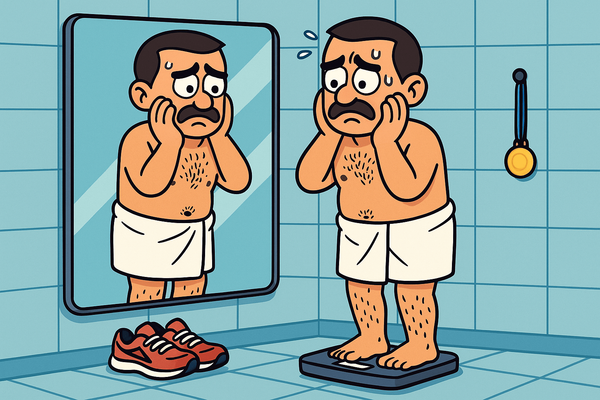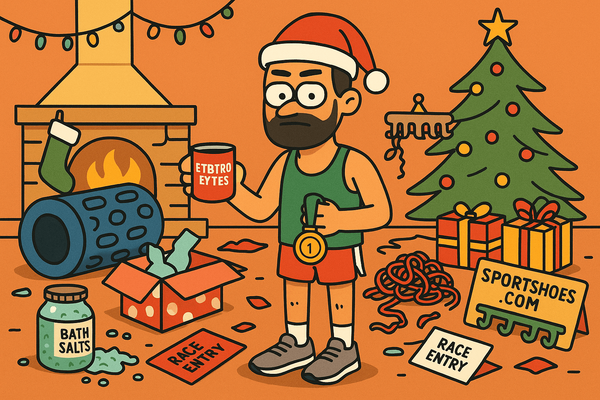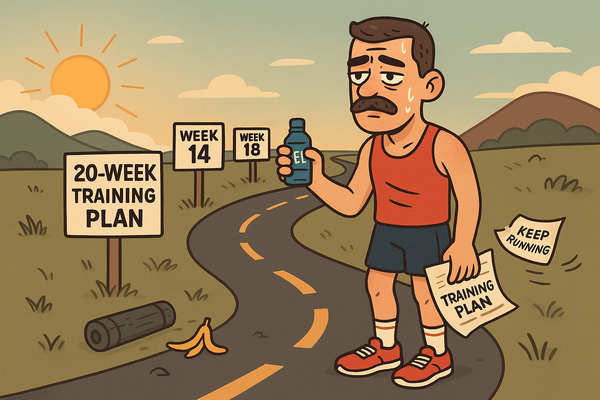Is running a cheap sport to get into? The true cost of running
Running is meant to be cheap. In reality? Carbon plated race shoes, pricey Garmins, and marathon holidays. Here’s the true cost of being a runner.

Running is supposed to be the cheapest sport in the world. “All you need is a pair of trainers,” they said. Lies. Absolute lies.
Sure, if you fancy shin splints and thighs rubbed raw by cotton, then yes, running can be free. But if you’d like to enjoy it without bleeding nipples, you may find that running is only slightly cheaper than skiing.
How much does running really cost?
You start with one pair of decent running shoes (£100–£150). Probably the lower end because what if you don’t like it? That’s the gateway drug. From there, the addiction spreads fast:
- That old cotton festival T-shirt you thought would be great for running already smells worse than a wet dog and clings to your body like a ????. In the bin it goes, replaced with a couple of tech tees
- The old shorts you found, probably also made of cotton, keep falling down and start to feel more like ankle weights than actual clothing. Best replace that with a pair of real running shorts.
Not bad so far, total damage is probably around £200/$250. But don’t get too comfortable - because now you’ve tasted comfort. And there is much still to be discovered.
The accessories upgrade: all the gear, no idea
Clothing
You can tell when someone is in their early-stage running addiction not by the pace they run at, but what they’re wearing. Waterproof jackets, full length trousers “because it’s cold”, gloves when it’s above 0 degrees… We’ve all been there.
Realising you don’t need all these extra clothing items is liberating, and you would think it makes it cheaper, but no. Your skimpy little shorts only have one pocket and it’s not big enough for your phone. Best get a FlipBelt. And is that a tech top you’re wearing? It’s lighter than air! That didn’t come cheap either.
Now that you feel like a ‘real’ runner, you find it’s a great way to commute, but you’ll need to carry clean clothes to wear in the pub. Best get a running bag. And we’ve not even touched on the tech yet.
Fitness trackers
Once upon a time, runners used a Casio watch and common sense. Apparently. That was before my time (I discovered exercise relatively late in life) so I don’t really know how the world functioned before Garmin.
You can get a fitness tracker for around £120/$150 and sure, they might do the job for some. But once you get going you’ll realise how much detail some of these trackers can get you - of course I want to know my “training readiness” that is clearly more accurate than simply asking myself how I feel today. That will set you back by another few hundred bucks.
And once you start upgrading, there’s no going back. I love my Garmin Fenix and it was well worth the investment. Going back to a basic fitness tracker is firmly off the table for the rest of my life.
Recovery
A quick 30 second stretch after a run, you say? No no, that won’t do: it’s time to get a foam roller to really get those muscles recovered. And you should probably get an ice pack for days when you get a niggle or minor injury, it’s worth having in the freezer. Your recovery will eventually include physiotherapy and/or sports massage, and probably a gym membership because you need to build up muscles that you didn’t think mattered for running but your physio has decided that your piriformis is responsible for all of your injuries in the past 7 years and it can only be trained in a fully equipped gym.
Snacks
What you can eat before and during a run is very limited, unless you’re one of those people that can run no matter what. You obviously need carbs before and during a run, but mix in too much fat or protein and we’re at risk of a poonami.
On your shortlist of “approved foods for running” there’s probably a selection of gels. Perhaps a carb drink too. Have you tried those caffeine bullets? You definitely should!
Races
There is no better motivation than a race in your calendar. Suddenly you’re following your training plan religiously, you’re eating better and you’re taking time to think about recovery because maybe this time you will get a new PB.
Running races is where your wallet starts begging for mercy. Smaller races like a local 10k can still be under £50, but start looking at bigger, well-organised events and they are pushing £100, often more.
And don’t get me started on race holidays.
Race shoes
Eventually, your starter shoes won’t be good enough anymore. You’ve improved your gait, you’re not struggling with shin splints and you’ve read somewhere that race-specific shoes can shave off seconds from your splits. Seconds!
And that’s all well and good until you discover carbon plated shoes like the Brooks Hyperion Elite 5 that will shave off even more seconds and make you feel like you’re flying on race day. Having tried the Nike Vaporfly Next% 3 at my Lisbon half marathon, I can confirm, it was the most beautiful ride of my life.
Carbon plate shoes are the £250/$350 comfort blanket you didn’t know you needed. Sadly they last about five minutes and are only good on race day, making them a fairly extravagant luxury.
The Running Cost Curve: which runner are you?
Every runner sits somewhere on The Running Cost Curve. It’s less a spectrum and more a slow slide into obsession.
1. The Free Runner (Annual spend: £0–£50)
- Runs in old work shoes and a cotton tee.
- Thinks Strava is a type of cheese.
- Still beats you in a parkrun.
2. The Sensible Saver (Annual spend: £200–£400)
- Owns one good pair of shoes and a carefully selected Garmin that isn’t top of the range, but ticks all of their needs.
- Owns a foam roller they probably bought from the ‘middle of Lidl’ while it was on offer.
- Resents spending money on clothing and runs mostly in old race T-shirts.
3. The Comfort Convert (Annual spend: £600–£1,000)
- Buys Lululemon shorts and has them altered like they’re bespoke tailoring.
- Owns at least two pairs of shoes: one for training, one for “fast days.”
4. The tech-obsessed (Annual spend: £1,500+)
- Has a top-end Garmin and a shoe rotation so complex it needs a spreadsheet.
- Owns more tech clothing than they have space for and has to donate last year’s running outfit to charity to make space for this year’s collection
- Insists their race shoes make them way faster, yet they haven’t beaten their PB in 5 years.
5. The global racer (Annual spend: £5,000+ a year)
- Runs multiple races every year, never in the same place and at least a 2 hour flight away.
- Buys new carbon plated shoes for every race.
- Probably works in finance.
So, is running expensive?
Running can be cheap. But let’s be honest: for most of us, it’s an expensive hobby disguised as exercise. The shoes, the tech, the race fees - they add up fast. But wherever we are on The Running Cost Curve, we keep spending. Because when you’re 20 miles into a marathon and your only thought is “thank God my shorts aren’t chafing,” it all feels worth it.





